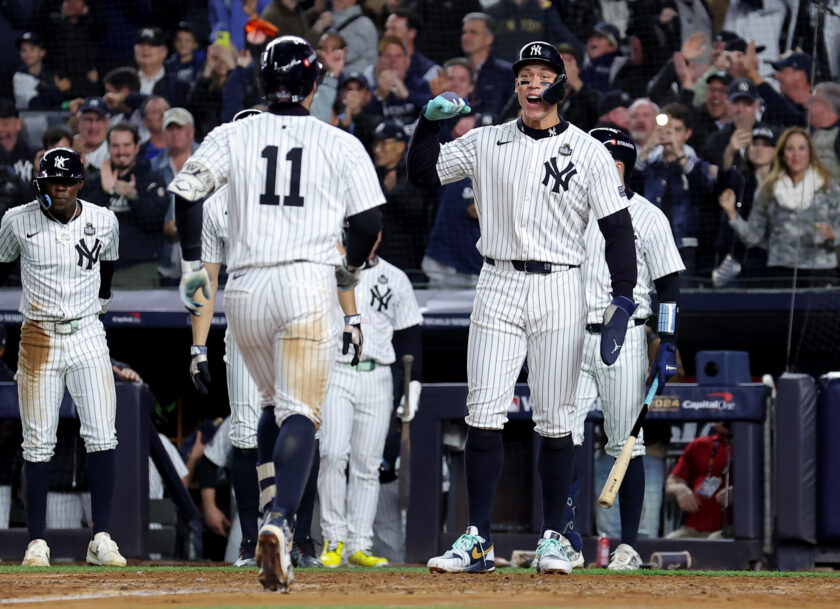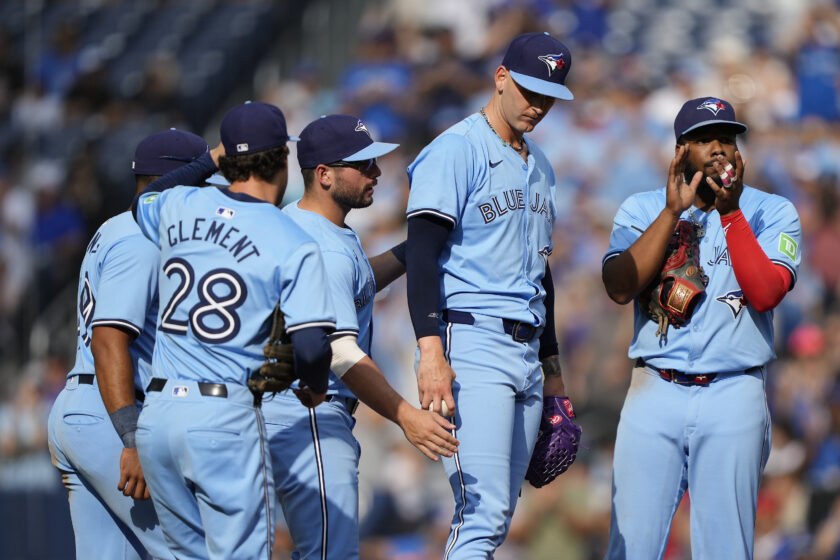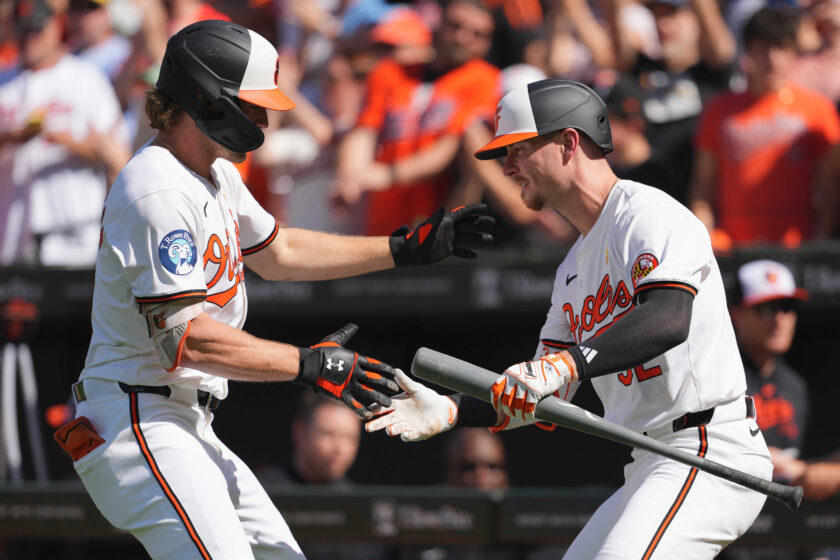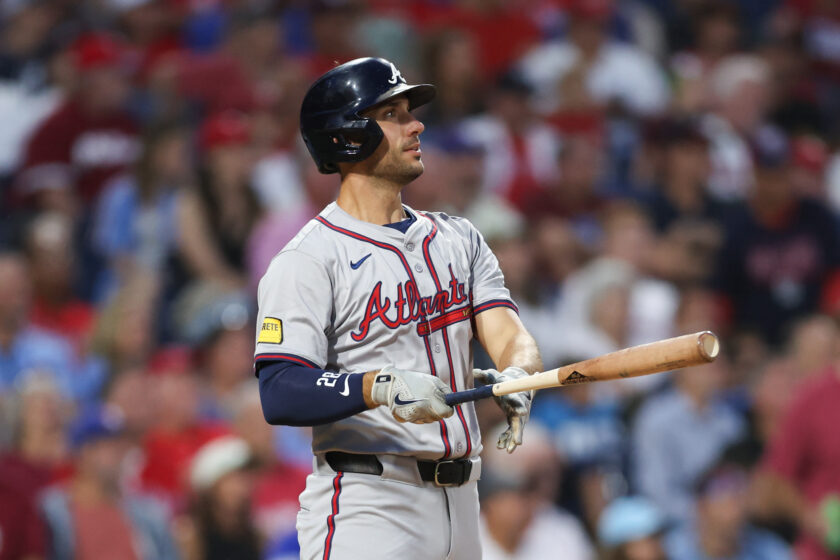MLB: With Regards To Baseball’s Designated Hitter, Leave As Is
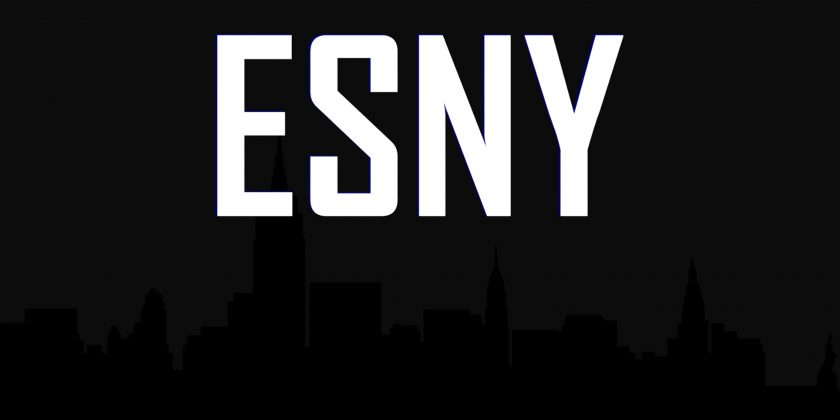
The designated hitter is a popular aspect in the American League, giving added excitement to the game. But it’s fun watching pitchers launch home runs, too.
By William Chase
 The National League adopting the designated hitter is a bad idea.
The National League adopting the designated hitter is a bad idea.
I like the dynamic with which the designated hitter brings to the American League, and in turn, what the DH means for baseball.
What it means for opposing managers having to strategize against, and what both the use of the DH, and lack thereof, means for the sport.
Rob Manfred: No DH in NL for “foreseeable future.” Says “vast majority” of NL clubs like status quo. https://t.co/Io46vrKlDS
— Jerry Crasnick (@jcrasnick) January 25, 2016
For the NL, it’s not just having the pitcher batting that I prefer. It’s everything that leads up to that situation.
Chicago Cubs’ manager Joe Maddon preferred batting his pitcher in the 8-hole last season, giving off the illusion that rookie and number-9 hitter, Addison Russell, was a second leadoff man.
Even from a psychological aspect, allowing Russell the opportunity to get his feet wet against Major League pitching, while batting lower in the lineup, could allow him to hit while ultimately reducing pressure on the 22-year-old.
That second leadoff man was an added component for Chicago.
With the AL you often here the adage, there are no cheap outs. Everyone in the batting order is a capable hitter, 1-through-9.
While some might make the argument that the pitcher batting is dangerous—Chien Ming Wang was injured as a result of running the bases—and while it might not be fun to see pitchers looking absolutely lost at the plate, there are more than a few who can hit, and I mean hit really well.
I don’t want my pitchers getting hurt doing anything not related to pitching; If I had it my way, I wouldn’t want my pitchers getting hurt period.
The way the game is currently constructed, the risk is there for a pitcher like Wang rolling his ankle in a situation that might be avoided with a DH.
Assuming Wang didn’t roll his ankle coming off the mound on a soft grounder.
Baseball players, pitchers and hitters alike, are athletes. They assume the risks and, in getting in tune with our 4-year-old selves and T-ball basics, the fundamentals of the game are at its core.
Designated hitter or not.
Madison Bumgarner is as good in his few plate appearances as he is every night on the mound. Carlos Zambrano could crush them onto Waveland Avenue with the best of the Cubs’ hitters.
If the NL adopted the DH, I would bear and grin it. It wouldn’t cause me to feel adversely about baseball, and if anything I’d learn to appreciate and recognize the pros to having the DH as opposed to not having one.
With that said, I like bunts. I like double shifts. I like moments of raw, rarified emotion when the pitcher, a seemingly harmless threat, who at best is just trying to move the runner, instead unleashes, yanking one out of the park.
Remember Game 7 of the NLCS?

The use of the DH doesn’t necessarily negate the likes of the bunt and the use of the double switch, but these aspects with which these tactics are deployed is centered largely around the use of a pitcher spot coming up in various situations.
Some call it over-managing, but seeing the likes of Tony LaRussa playing chess while others were more content with checkers shows the complexity of the game, down to its fundamental core.
The utilization of strategies aside, the DH in the AL and absence of it in the NL is what makes the sport interesting, while adding spice to the main events.
Inter-league and World Series games have that extra component—that intangible of who plays what position when the AL squad is in a National League park, and who benefits by adding a bat to the lineup.
The AL might be forced to dabble with a more National League brand of ball. Meanwhile the NL can’t count on a potential out in the lineup.
Maybe you didn’t like having to see David Ortiz playing first base in the NL park?
Tough.
We’ll just have to see how the manager’s strategy pays off that night.
Traditionalists weren’t fond of the AL adopting the DH. It’s understandable, but having seen the strengths of it at work, I personally see it as a great intangible the game has to work with.
Which is all the more of a reason I like baseball having it delegated to one league.
Those who might be adverse to the DH completely could say the game was meant to be played with a bat and glove. As I make the case for why the NL doesn’t need the DH, and those advocates in turn might push for why the NL should adopt it, such as a way to limit injuries, I would instead advocate for pitchers being more akin to hitting and running.
Obviously pitchers are not going to focus on hitting as much when they are paid to pitch every fifth day. There’s a lot of hard work and rigorous routine that goes into those four days between starts. With that said, pitchers still take their hacks, and some really enjoy it.
DH advocates can point out that the sport would prosper as a result of the DH, from a monetary position.
Chicks dig the long ball, right?
Well, that and also the fact that teams would then be forced to consider the added value of a full-time DH.
If you think salaries are crazy now, and the likes of pitchers Jeff Samardzija and Mike Leake are overvalued for instance, imagine the bidding when players can be added just because of their offensive potential.
Yoenis Cespedes would have been a crowded outfielder in Washington had he signed with the Nationals, but would have added extra value as a DH and a guy who can play the outfield.

It may seem easy to just find a hitter who can hit on command, but we know a truly good designated hitter is a rare commodity.
While the utilization of the DH has made good players great, and potentially Hall of Famers—David Ortiz and Edgar Martinez—I’m never going to get tired of seeing Madison Bumgarner hitting a grandslam, or Bartolo Colon legging out a double like he did last spring.
The addition of the DH to the NL would mean the end of, as New York Mets’ broadcaster Gary Cohen one said about Colon’s double, “The most exciting at-bat in baseball.”
Next: Reviewing Mike Francesa’s Yoenis Cespedes Prediction
William Chase is editor at Elite Sports NY, and has been featured on such prominent websites including Bleacher Report. William is also currently the Marketing & Media Relations Intern for the Augusta GreenJackets.

